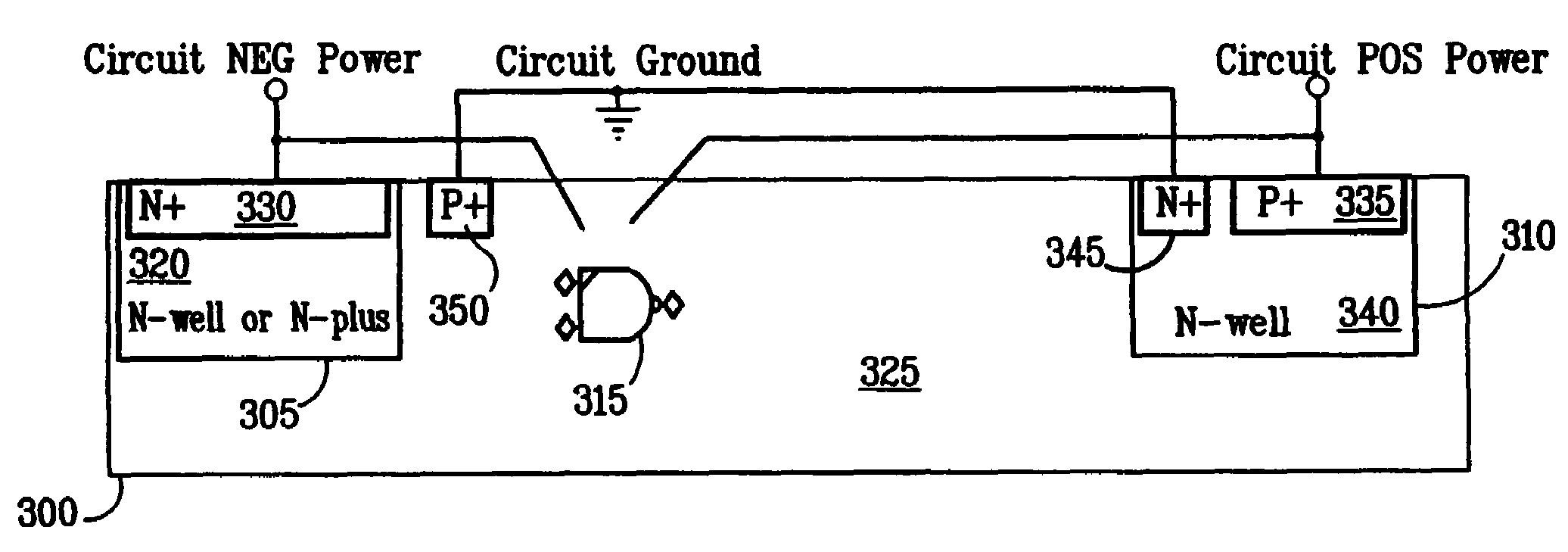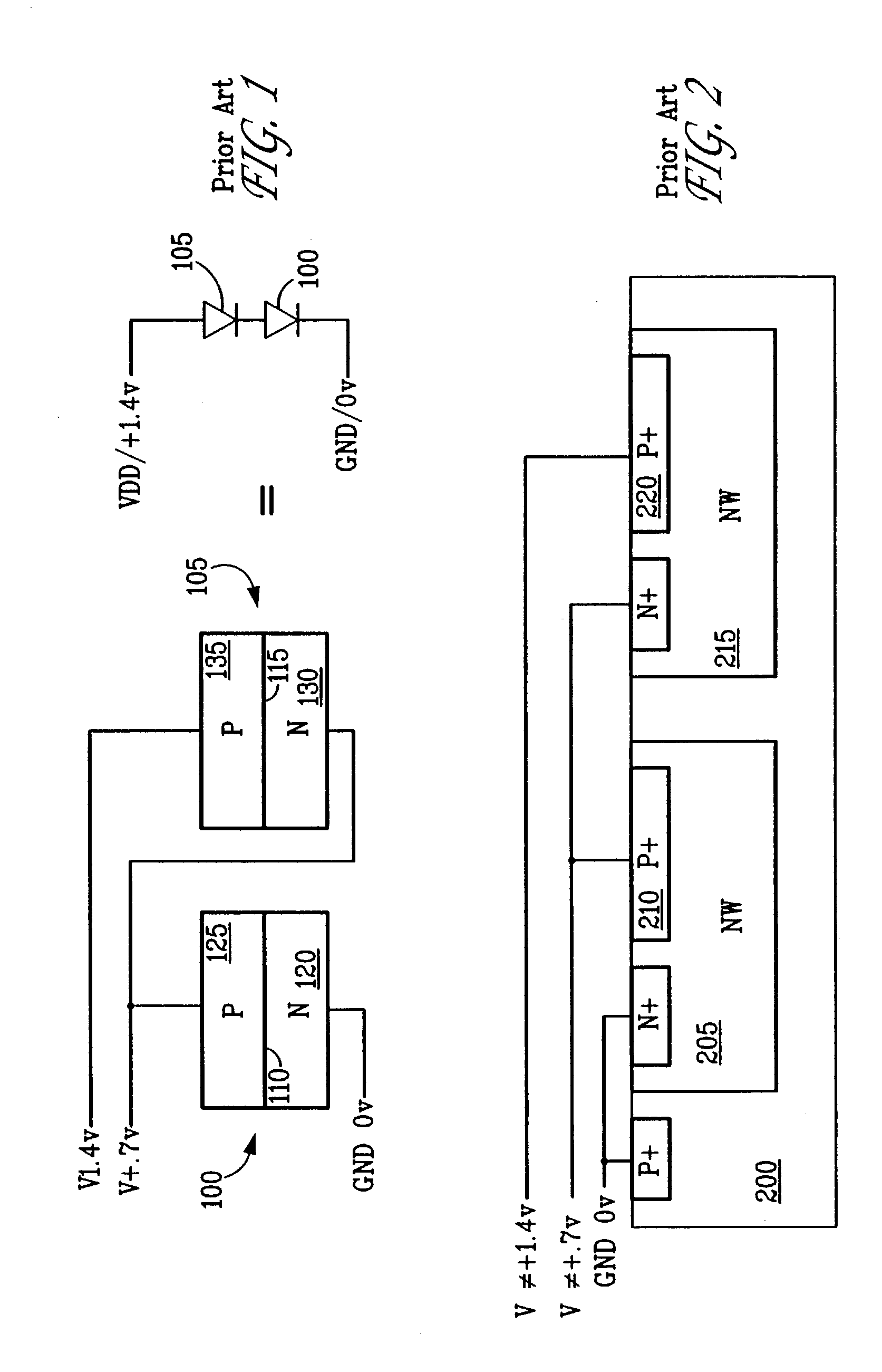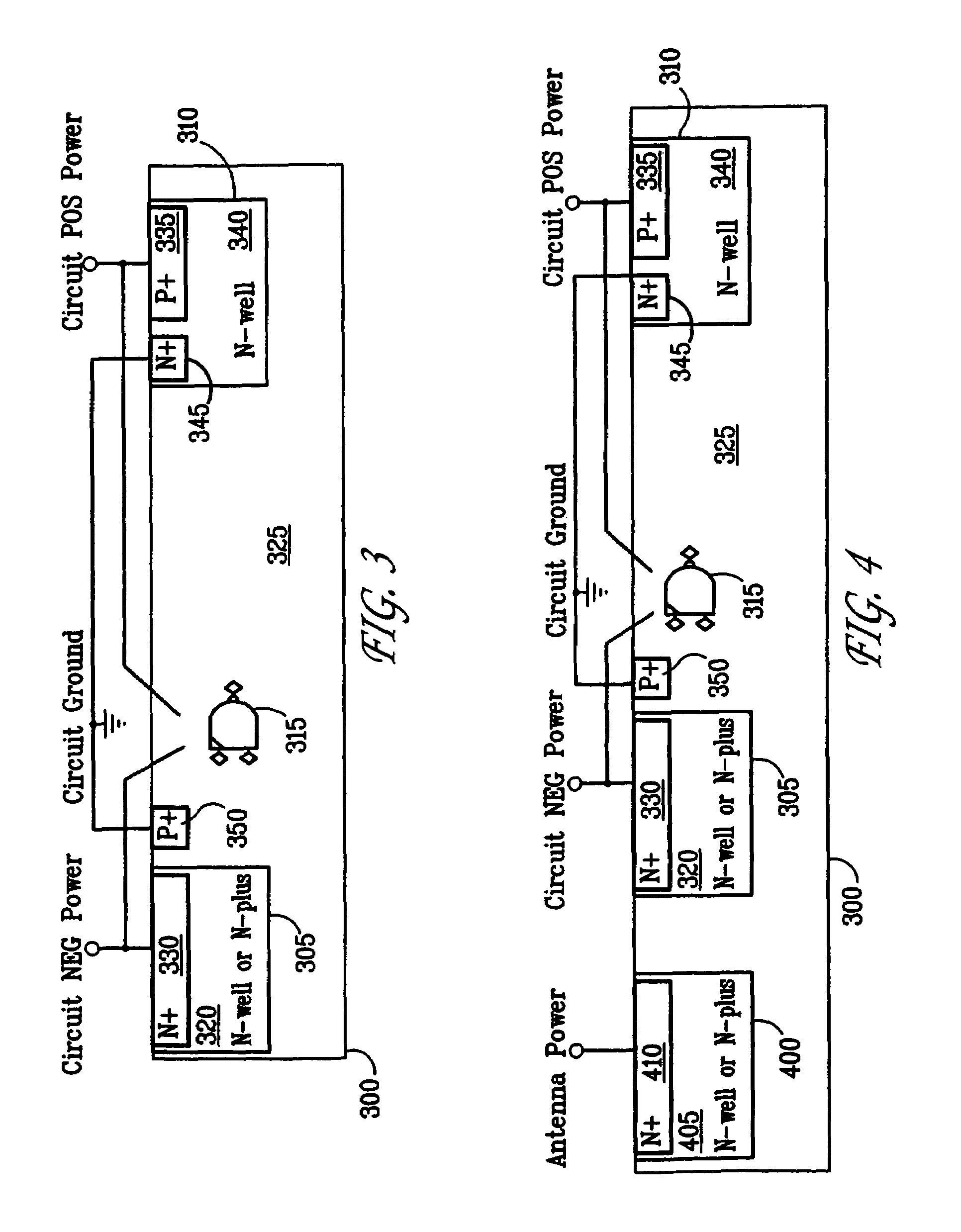Method and apparatus for powering circuitry with on-chip solar cells within a common substrate
a solar cell and circuitry technology, applied in the field of electronic radio frequency identification tags, can solve the problems of increasing restricting the ability to reduce the size of the electronic transponder, and adding to the size of the transponder, and achieve the effect of sufficient power
- Summary
- Abstract
- Description
- Claims
- Application Information
AI Technical Summary
Benefits of technology
Problems solved by technology
Method used
Image
Examples
Embodiment Construction
[0012]The present invention is defined by the following claims, and nothing in this section should be taken as a limitation on those claims. By way of introduction, the embodiments described below include a method and apparatus for supplying power from a light source for a transponder.
[0013]In order to minimize size and cost, it is desirable to manufacture a transponder using a standard CMOS process on a single die. Standard CMOS processes utilize a common, conductive substrate. Thus, without additional processing, any one photovoltaic element is not completely isolated from another.
[0014]In instances where more than one photovoltaic element is used to supply sufficient power, the common substrate causes difficulties. For example, if an increased voltage differential is desired, two photodiodes may be connected in series. In processes where the two photodiodes are isolated, the series connection will double the voltage produced. If the two photodiodes are not isolated, as with the u...
PUM
 Login to View More
Login to View More Abstract
Description
Claims
Application Information
 Login to View More
Login to View More - R&D
- Intellectual Property
- Life Sciences
- Materials
- Tech Scout
- Unparalleled Data Quality
- Higher Quality Content
- 60% Fewer Hallucinations
Browse by: Latest US Patents, China's latest patents, Technical Efficacy Thesaurus, Application Domain, Technology Topic, Popular Technical Reports.
© 2025 PatSnap. All rights reserved.Legal|Privacy policy|Modern Slavery Act Transparency Statement|Sitemap|About US| Contact US: help@patsnap.com



